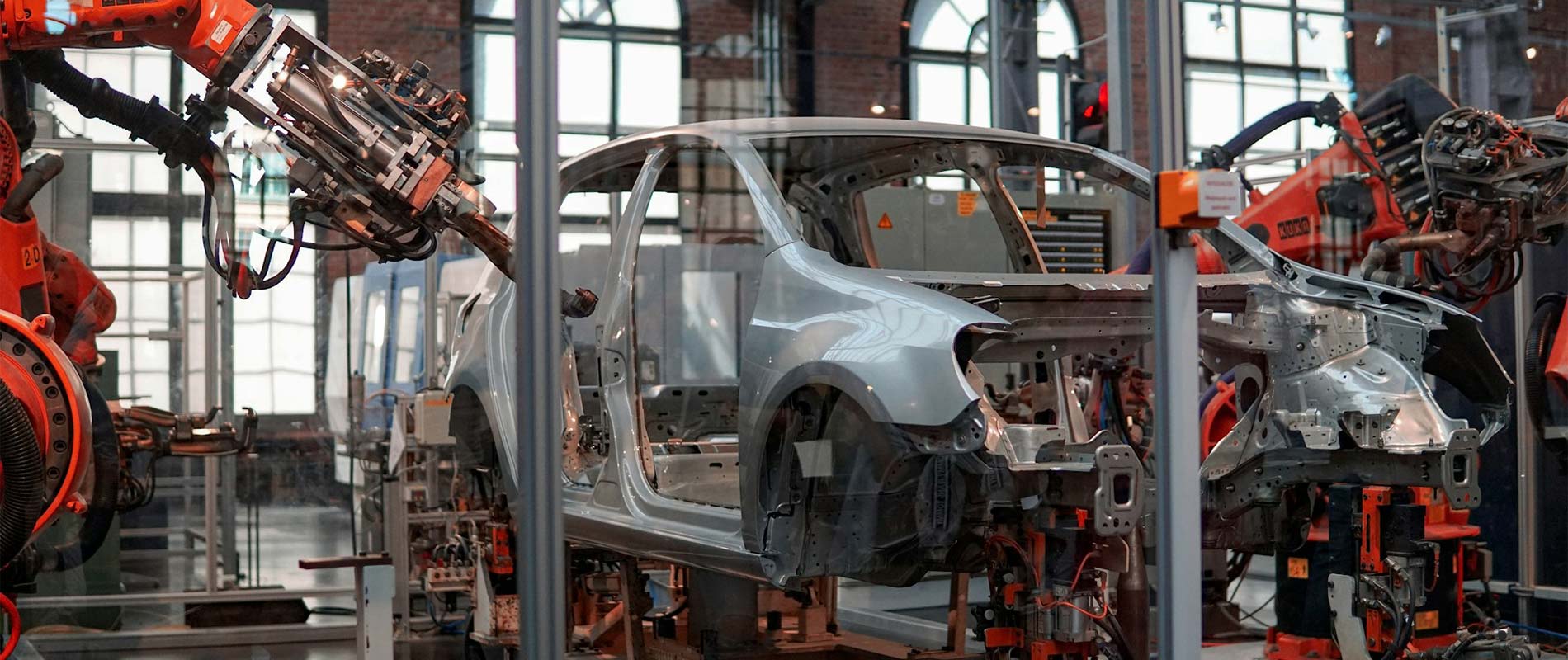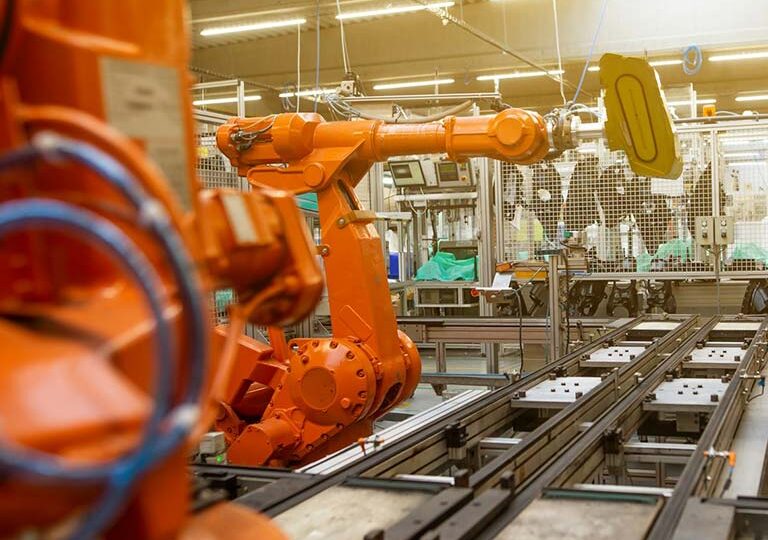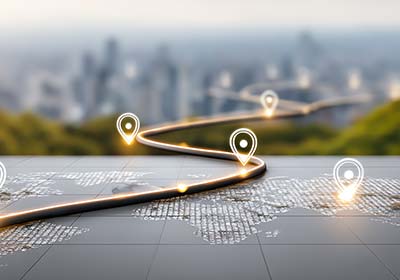
Internet of Things (IoT) and Data Analytics
Driving innovation in the Automotive and Industrial worlds.
In the automotive and industrial sectors, the Internet of Things (IoT) and data analytics are transforming how companies operate. IoT connects sensors, machines, and vehicles, enabling them to share data, while advanced analytics turn that data into meaningful insights. Together, they help businesses optimize performance, reduce downtime, and improve efficiency.
As a Microsoft Solutions Partner, we’ve worked with organizations across these industries to harness IoT and analytics in ways that make a real difference. Let’s take a closer look at how this technology is being used to drive improvements in everything from equipment maintenance to new business models.
Transforming Automotive Service Equipment with IoT Integration
Learn how Oakwood partnered with a global leader in automotive service equipment to transform their product offerings.

Why IoT Is Everywhere in Automotive and Industrial
In the last few years, IoT adoption has exploded. Think about the typical factory floor or an automotive assembly line—there’s a ton of equipment running all the time. Now, add in IoT sensors that are constantly tracking things like performance, temperature, or even how much energy that machine is using. Suddenly, you’ve got data that can tell you when something’s about to go wrong or how to run more efficiently. It’s like giving your machines a voice.
- You See Everything in Real-Time: The days of waiting until a machine breaks to figure out what went wrong are (thankfully) behind us. With IoT, you get real-time visibility into everything that’s happening, from the production line to individual components. In the automotive world, this means sensors on everything from the welding robots to the conveyor belts. If something’s not right, you’ll know right away.
- Smart Factories Are the New Normal: IoT is also driving the whole “smart factory” revolution. Instead of machines just running on their own, they’re now connected to each other and can make decisions based on data. Think of it as turning a regular factory into a fully automated, data-driven powerhouse. It’s not just about keeping things running—it’s about constantly improving how things get done.
That’s Great. But What Do You Do With All That Data?
This is where things get really interesting. Collecting IoT data is great, but unless you’re using it to make decisions, it’s just a pile of numbers. That’s where Microsoft Azure comes in with some seriously powerful analytics tools to help make sense of it all.
- Stop Guessing, Start Predicting: Instead of waiting for equipment to fail (and dealing with the downtime that comes with it), why not predict when it’s going to break down? That’s what predictive maintenance is all about. Using Azure IoT Hub and tools like Azure Synapse, you can track things like temperature or vibration data in real time. The system learns what “normal” looks like, and when something starts to go off the rails, it flags it before you even know there’s a problem. Take an automotive plant, for example. The welding robots are critical to production. If one of them breaks, the whole line might stop. But with IoT sensors and analytics, you can catch problems—like wear and tear on a welding arm—early and fix them before they cause any serious downtime. The same goes for industrial machinery. You’re not just fixing things—you’re preventing the problems in the first place.
- Scaling It Up: IoT isn’t just about monitoring one machine—it’s about keeping an eye on your entire operation, especially if you’re spread across multiple locations. This is where Azure really shines. You can scale your data infrastructure to handle however much data you’re collecting, and the best part? It’s all processed in real-time. So whether you’re tracking the energy usage of five machines or 500, the system can handle it and help you optimize everything on the fly.
Getting Lean: Saving Time, Money, and Energy
Now let’s talk about the bottom line. One of the biggest benefits of IoT and analytics is that it helps you trim the fat—whether it’s wasted energy, unnecessary maintenance, or inefficient production processes. And that can save you a lot of money.
- Cutting Energy Costs: Energy is a huge expense in most industrial settings. IoT sensors can track exactly how much energy each machine is using and when. With data analytics, you can figure out where you’re wasting energy and make adjustments to cut costs. Maybe some equipment is running during non-peak hours or using more power than it needs. With real-time data, you can catch that and make changes in real-time.
- Process Optimization on the Fly: The cool thing about having real-time data is that you can make decisions on the spot. Maybe you find out that a bottleneck in your production line happens every Tuesday at 3 PM. By looking at the data, you might realize it’s because a key machine is running too slow. With IoT and analytics, you don’t have to wait until the end of the month to get a report—you can fix things as they happen.
Better Products, Safer Workers
IoT isn’t just about efficiency—it’s also about improving the quality of the products you’re making and keeping your workers safe.
- Smarter Quality Control: In industries like automotive, quality is everything. IoT sensors can keep track of product specs and flag anything that’s outside of the norm. This means you’re not waiting until the end of production to catch errors—it happens as soon as they occur. And with analytics running in the background, you can even automate the process to fix issues on the spot.
- Keeping Workers Safe: On the safety side, IoT devices are helping track things like air quality, noise levels, or even hazardous materials. If something’s off, analytics platforms can send real-time alerts, keeping workers safe before any accidents happen. It’s like having a digital safety net over your entire operation.
New Business Models Are Popping Up
One of the most exciting parts of IoT and analytics is that they’re opening up entirely new ways to do business.
- Selling Services, Not Just Products: Instead of just selling a machine, you can offer it as a service. Think of it as “leasing” equipment to customers, with the added bonus of monitoring and maintaining it for them. IoT sensors give you all the data you need to offer things like predictive maintenance, which can become an additional service (and revenue stream) for your business. This kind of model is already catching on in automotive with connected vehicles, where manufacturers can offer things like performance insights and maintenance alerts in real-time. It’s a win-win—customers get more value, and you get a new revenue stream.
- Monetizing Your Data: The data you collect from IoT devices could be valuable to other companies, too. Think about vehicle performance data or machine usage patterns. You could potentially sell those insights to third-party providers or partners, creating an entirely new business model that didn’t exist before.
Conclusion – Why Work with a Microsoft Solutions Partner like Oakwood?
At the end of the day, IoT and analytics are incredibly powerful, but they’re also complex. It’s not just about slapping a few sensors on your machines—it’s about building a strategy to make sure all that data is working for you. That’s where we come in. As a Microsoft Solutions Partner, we’ve helped companies across the automotive and industrial sectors implement IoT and analytics solutions that actually deliver results.
Whether you’re looking to optimize your operations, cut costs, or explore new business models, we’ve got the expertise to help you navigate this ever-changing landscape.
Ready to have a conversation? Contact the Oakwood experts today!



